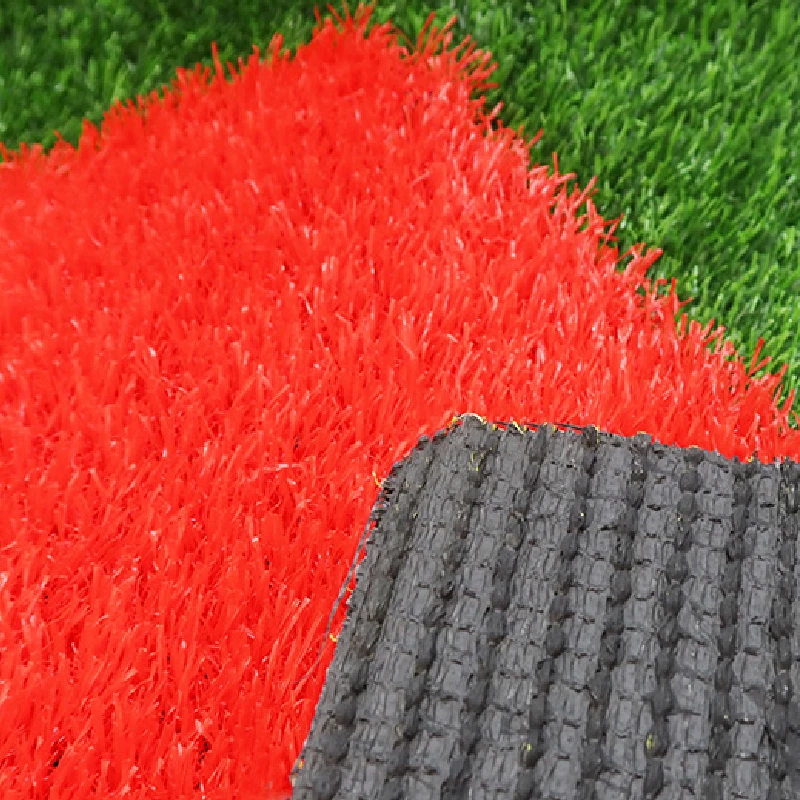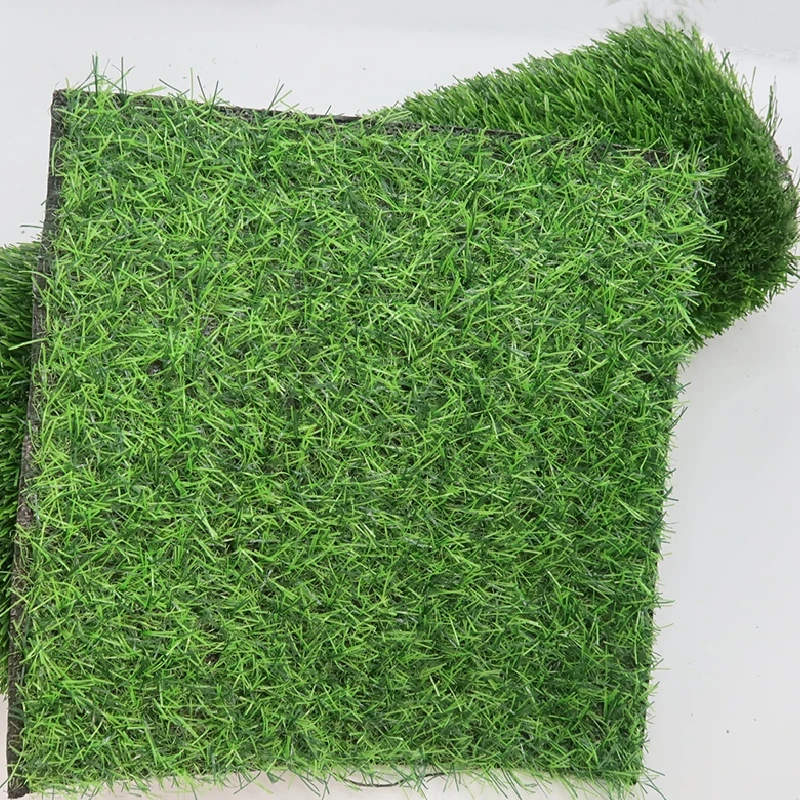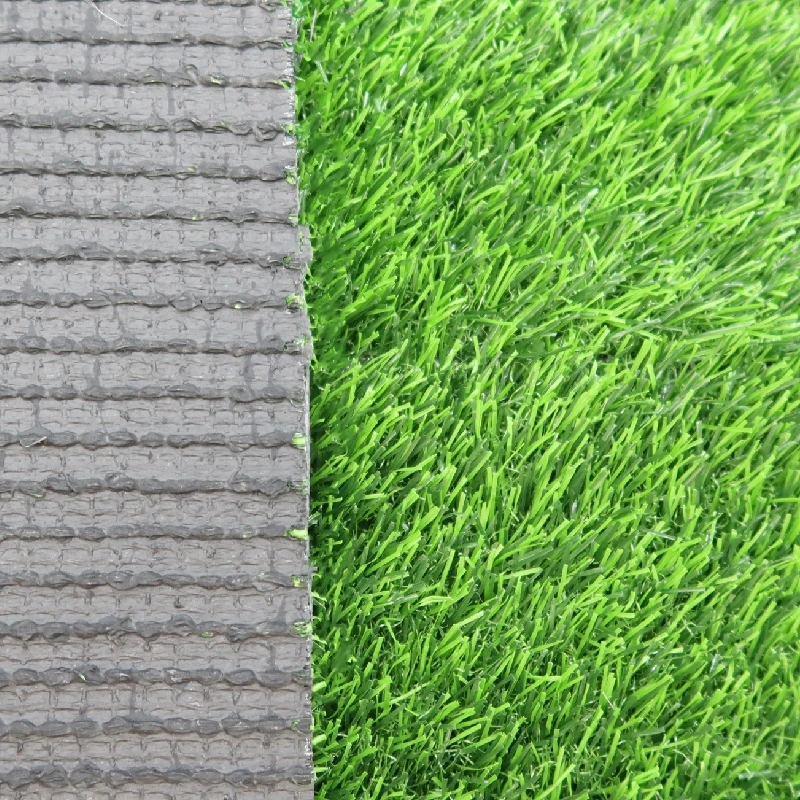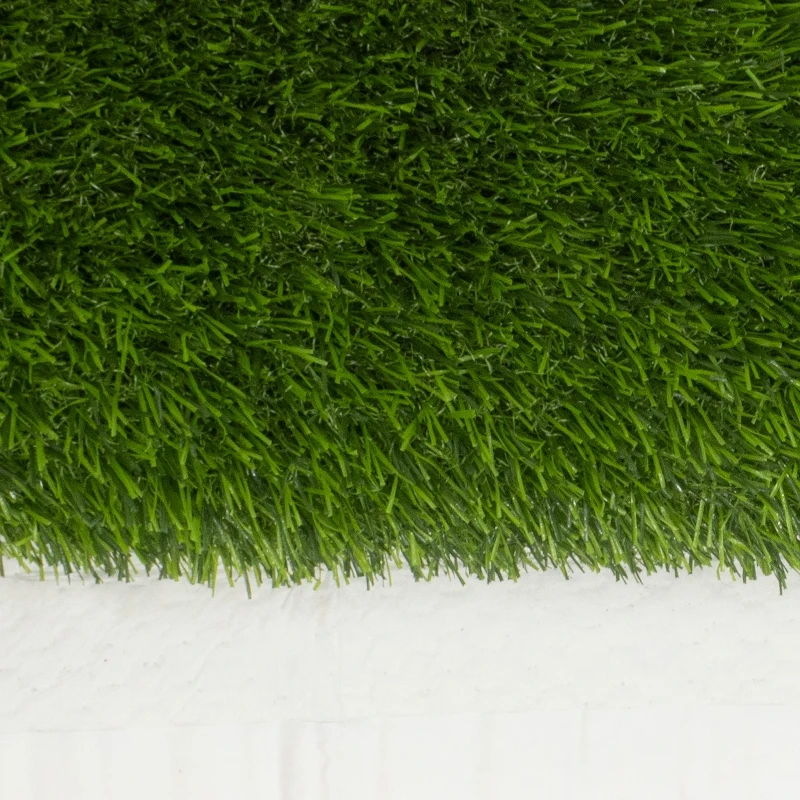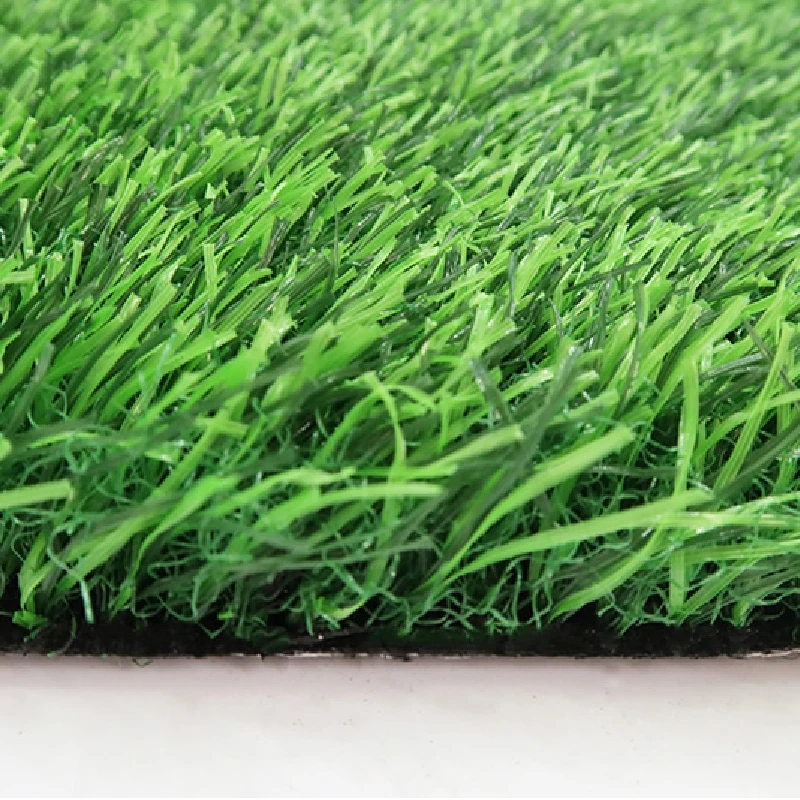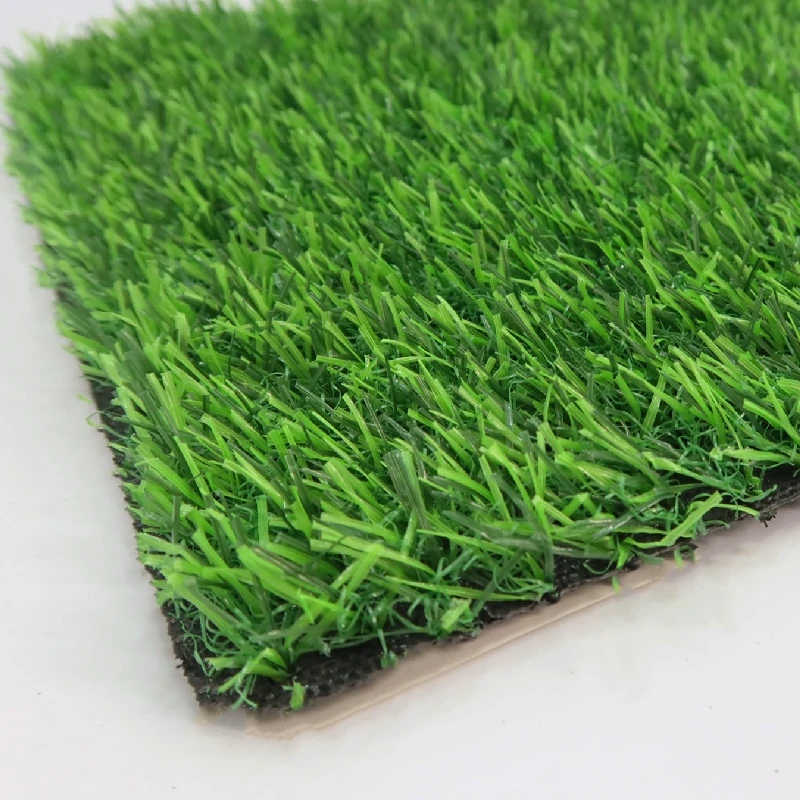Synthetic Turf: Sustainable Green Solutions for Sports, Industry & Urban Living
Nov . 24, 2025 13:48 Back to list
Understanding Synthetic Turf: Why It’s More Than Just Artificial Grass
If you’ve ever walked into a sports stadium, a playground, or even a rooftop garden and noticed the perfectly green, consistently lush-looking grass — chances are, you were standing on synthetic turf. It’s a material that’s quietly taken root worldwide, transforming how we think about landscaping, sports pitches, and even humanitarian aid. But why does synthetic turf matter on a global scale? Frankly, it’s about resource efficiency, adaptability, and sustainability — all in a very green package.
In a world where water scarcity and climate change dominate headlines, maintaining natural grass isn’t always practical or responsible. Synthetic turf offers a solution that reduces water usage, cuts down on chemical fertilizer needs, and keeps surfaces usable regardless of weather. Understanding synthetic turf isn’t just for landscape designers or engineers—it’s a conversation about how urban environments, recreation, and infrastructure can evolve responsibly.
The Global Context: Why Synthetic Turf Is a Growing Industry
Globally, the artificial turf market is booming. According to a recent study by ISO standards and environmental reports, water usage for natural grass sports fields can reach up to 20,000 gallons per week in hot climates. Meanwhile, the World Bank has flagged urban areas facing “green space scarcity” due to rapid population growth and climate impacts.
Synthetic turf tackles these challenges by requiring minimal water and maintenance. Plus, it extends playing seasons in sports facilities where heavy rainfall or droughts would otherwise cause closures. Yet, like any technology, it comes with its own environmental debates—like disposal and heat retention—that industries and researchers continue to study.
Today, synthetic turf stands at the crossroads of sustainability and practicality, not just for recreation but for industries as diverse as mining, agriculture, and disaster relief. It’s a kind of material innovation that quietly but profoundly reshapes how we manage outdoor surfaces.
What Exactly Is Synthetic Turf?
At its core, synthetic turf is a surface made to resemble natural grass but crafted from plastic materials—usually polyethylene, polypropylene, or nylon fibers. These synthetic blades are tufted onto a backing that provides support and drainage. Unlike natural grass, this artificial surface doesn’t rely on soil, sunlight, or continuous watering.
But synthetic turf isn’t just “fake grass.” It’s a highly engineered product designed for durability and performance. In industries, it often substitutes for soil or organic ground cover, allowing for rapid installation and consistent quality. It connects to humanitarian needs too: think quick installation of safe play areas in refugee camps or resilient ground covers in temporary shelters.
Key Factors Defining Synthetic Turf Quality and Use
Durability
One of the biggest draws is synthetic turf’s resilience. Unlike sod that wears thin, synthetic turf can withstand intense use—be it sports matches or heavy foot traffic—without losing its shape or color. It also resists fading from UV exposure, thanks to stabilizers often added during manufacturing.
Scalability and Installation Speed
Because it comes in rolls and doesn’t need growing, synthetic turf can be laid down quickly over large areas. Some sports fields go from dirt to playable surface in under a week, a lifesaver for congested urban zones or emergency relief sites.
Cost Efficiency
Upfront costs can be higher than natural grass, but the reduced expenses in irrigation, mowing, and fertilizing often balance the scale over time. Plus, durability adds value by cutting down frequent replacement needs.
Environmental Considerations
While synthetic turf saves water, there’s a flip side: the concern about microplastic runoff and end-of-life disposal is real. However, innovations in recyclable turf fibers and more eco-friendly backing are making inroads.
Versatility
Used indoors or outdoors, in sports, landscaping, industrial zones, or even rooftop gardens, synthetic turf adapts to different needs. It supports safe surfaces for kids, aesthetically pleasing green spaces in cities, and dust control in mining areas.
Real-World Applications of Synthetic Turf
Across the globe, synthetic turf’s applications stretch far beyond typical sports fields and residential lawns.
- Sports and Recreation: From soccer to tennis courts, the ability to maintain consistent conditions regardless of weather means leagues can schedule matches without worrying about muddy or worn fields.
- Urban Green Spaces: Parks, playgrounds, and even urban rooftops employ synthetic turf to inject green without the usual watering headaches.
- Industrial Use: Mining sites and factories install synthetic turf to reduce dust, control erosion, or create safe walkways.
- Disaster Relief & Humanitarian Aid: NGOs use synthetic turf for quick installation of safe play zones in camps or as ground covers that reduce mud.
- Educational Campuses: Schools appreciate synthetic turf for low-maintenance sports areas and safer playgrounds.
For example, in California’s drought-prone areas, many school districts have switched to synthetic fields, saving millions of gallons of water annually.
Advantages That Cement Synthetic Turf’s Long-Term Value
In real terms, synthetic turf’s benefits make a difference once you step back and look at the big picture.
- Cost Savings: No mowing, no fertilizing, no irrigation means lower ongoing expenses.
- Environmental Sustainability: Water conservation is a huge plus in dry regions.
- Safety and Comfort: Many turfs offer shock absorption and non-slip surfaces, critical for sports injuries prevention.
- Year-Round Use: Fields don’t close for dormant grass seasons or bad weather.
- Enhanced Appearance: Synthetic surfaces look lush consistently, contributing to mental well-being and aesthetics.
A Quick Look at Synthetic Turf Specifications
| Specification | Typical Value | Remark |
|---|---|---|
| Pile Height | 20-40 mm | Varies by sport |
| Fiber Material | Polyethylene / Nylon | UV-resistant blends used |
| Backing | Polyurethane Coated | Water-permeable for drainage |
| Installation Time | 3-7 days (per field) | Depends on site prep |
| Expected Lifespan | 8-12 years | With proper maintenance |
Synthetic Turf Vendor Comparison: What to Look For
| Vendor | Product Range | Environmental Certification | Warranty | Price Range |
|---|---|---|---|---|
| GreenFields | Sports turf, landscaping | ISO 14001 | 10 years | $$$ |
| TurfPro | Residential, commercial | LEED-compatible | 8 years | $$ |
| EnviroTurf | Eco-friendly, recycled materials | Cradle to Cradle Certified | 7 years | $$$ |
Future Trends and Innovations in Synthetic Turf
It’s an exciting time. Innovations are rapidly shifting the synthetic turf landscape into something more sustainable and smarter. Biodegradable fibers, recycled plastics, and improved infill materials that reduce heat buildup are just a few developments in play.
Digital tech integration is also creeping in: from embedded sensors that monitor surface conditions to robotic maintenance tools. Furthermore, regulatory pressures encourage greener manufacturing, helping the field move closer to a carbon-neutral footprint.
Challenges and Solutions on the Turf
Now, it’s not all sunshine and grass blades—there are concerns. Heat retention on hot days can make synthetic turf uncomfortable or even unsafe. Some older turf products cause microplastic shedding that worries environmentalists.
Solutions do exist: improved fiber coatings and shade trees can combat heat, and new recycling programs encourage safe end-of-life disposal. Innovations like closed-loop recycling and organic infill mixtures show promising direction.
Frequently Asked Questions About Synthetic Turf
Q1: How long does synthetic turf typically last before replacement?
A1: Most synthetic turf blades are designed to last between 8-12 years under normal usage conditions, provided regular maintenance such as brushing and cleaning is performed. Heavy-use fields may see shorter lifespans but benefit from warranty support.
Q2: Is synthetic turf environmentally friendly compared to natural grass?
A2: Synthetic turf saves considerable water and chemical inputs, making it beneficial in water-scarce areas. However, concerns about microplastics and recyclability remain, though newer products are addressing these issues.
Q3: Can synthetic turf be installed indoors?
A3: Absolutely. Synthetic turf is often used indoors for gyms, training weight rooms, and pet areas due to its durability and low maintenance.
Q4: Does synthetic turf require special maintenance?
A4: Maintenance is easier than natural grass but necessary. Basic tasks include brushing fibers upright, removing debris, periodically rinsing, and occasional disinfection to keep the surface safe and attractive.
Conclusion: Why Synthetic Turf Is Here to Stay
In sum, synthetic turf stands as a versatile, resource-conscious alternative to natural grass. Its global applications—from sports arenas to emergency relief camps—highlight its usefulness in addressing contemporary challenges of sustainability and urban development.
Interested in exploring synthetic turf solutions tailored to your needs? Visit our website at synthetic turf to learn more and take the first step toward greener, more resilient groundcover options.
-
Durable, Eco-Friendly Turf for Balcony | Enhance Your Urban Space
NewsNov.24,2025
-
Turf Between Pavers: Sustainable Green Paving Solutions for Modern Urban Spaces
NewsNov.24,2025
-
Discover the Benefits of Turf and Pavers Backyard | Sustainable Outdoor Design
NewsNov.24,2025
-
Top Quality Artificial Grass – Sustainable, Durable, and Stylish Turf Solutions
NewsNov.24,2025
-
Durable and Eco-Friendly Thick Artificial Grass Solutions | Hoya Grass
NewsNov.24,2025
Products categories



